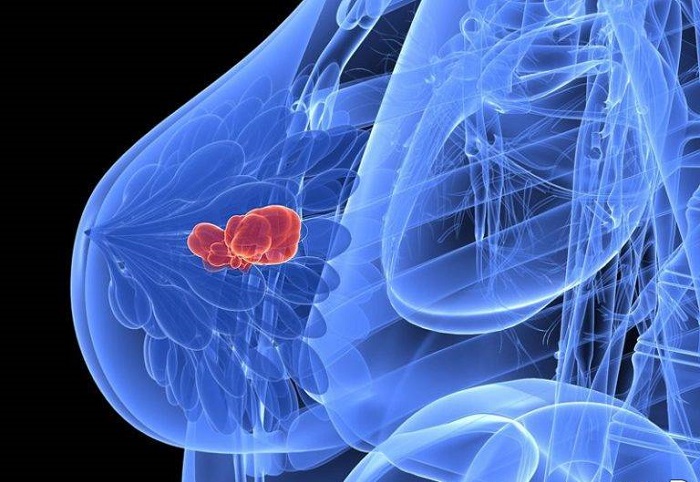Table of Contents
Mammography,
a radiological imaging system that uses a low dose of “X” radiation, is widely
used for screening and diagnosing breast diseases. It is particularly widely
used for the early diagnosis of breast cancer and is usually routinely
performed after the age of 40. Whether mammography poses a radiation risk is
one of patients’ main concerns. The radiation dose from mammography is very
low, and no proven harm exists.
What is mammography?
Mammography can be defined as an X-ray of the breast. It is
a radiological imaging technique that allows visualisation of the breast tissue
using a low dose of “X” radiation. Mammography can detect changes in breast
tissue and benign or malignant lesions that cannot be detected during a medical
examination.
What diseases is mammography used to diagnose?
Mammography is the most commonly used imaging method for the
early diagnosis of breast cancer. Breast cancer is one of the most common
cancers among women. For this reason, women who have no complaints at 40 must
also have a screening mammogram.
– Palpable firmness in the breast,
– Breast mass
– Nipple discharge
– Breast pain
– Thickening of the breast skin
– Mammography and breast ultrasound should be performed to
find out the cause of the complaints, such as changes in breast size or shape.
Frequently asked questions about mammography
What preparation is needed before mammography?
No prior preparation is required. The ideal time for a
mammogram is the first week after the end of menstruation, but it can be done
on other days. It would help if you did not use deodorant or powder on the test
day. The patient should bring her old mammograms, if any. A slight change in
breast tissue between the old and new films may be a sign of cancer. Similarly,
a lesion thought to be present in old films may be considered benign. This
saves the patient from an unnecessary biopsy.
How is mammography performed?
– With the patient standing before the mammography machine,
the breast is placed between two plastic plates.
– The plates apply pressure to the breast and flatten it.
The patient may feel discomfort during this process, but this procedure is
necessary to obtain a healthy image. It is essential to even out the thickness
of the breast so that the entire breast tissue can be seen. Spreading the
breast tissue reduces the possibility that the overlying breast tissue will
hide small breast lesions.
This compression of the breast allows the thinner breast
tissue to be visualised, so a lower dose of X-rays is used.
To ensure high image quality, the patient must not move
during the procedure. For this reason, the patient may be asked to hold her
breath for some time during imaging.
What is digital mammography?
Digital mammography, a new breast imaging technology, has
become the primary diagnostic method for diagnosing breast disease and
screening for breast cancer. Unlike conventional mammography, digital images
are obtained using electronic sensors. These images are then evaluated in a
CAD-programmed workstation with high-resolution dedicated monitors. This
workstation performs several processes, such as magnification, measurement and
contrast adjustment, independent of the X-ray dose used.
Is mammography a painful imaging technique?
During mammography, pain or soreness may be felt due to
compression of the breasts. However, this pain or soreness disappears on its
own after a while. Women with more sensitive breasts are advised to leave
mammography until after their menstrual period so that they feel less pain.
Why is screening mammography crucial?
Breast cancer has the highest mortality rate in women. By
the age of 70, 13% of women are at risk of developing breast cancer. The cancer
can take several years or even longer to develop into a mass. In the early
stages, the tumour grows insidiously, usually without causing pain or any
complaints. If the cancer is caught at this stage, the chances of recovery are
very high. The aim of screening mammography is to capture the mass before it
has reached a size that the patient or the examining doctor can palpate. In
countries where screening mammography is routinely performed, breast cancer
deaths are reduced by 30%.
Is there an age limit for mammography?
There is an age limit for mammography. Mammography is not
recommended for women under 40 unless there are strong suspicions. Breast
tissue consists mainly of fatty tissue and the structure of the mammary glands.
On mammography, the fatty tissue is almost black, and the mammary gland
structure is white. Since breast cancer arises from the mammary gland, it is
visible in white on mammography. In women under 40 years of age, because the
mammary gland structure dominates the breast, it is not possible to distinguish
breast cancer tissue, which is also visible in white breast tissue. After the
age of 40, the mammary gland structure in the breast tissue regresses and turns
into fatty tissue. In this case, the white breast cancer tissue can be easily
identified in the black breast structure.
In which cases can mammography be started earlier?
Women with a family history of breast cancer should start
surveillance at an early age, especially if their relatives had breast cancer
at an early age. In such cases, mammography can be started at the age of 35-40
years. In addition, if a breast ultrasound is negative in women under 40 years
of age who are suspected of having cancer, breast MRI is the first choice.
Mammography can be performed in cases where breast MRI cannot be performed for
various reasons.
How often should a woman have a mammogram?
Every woman should have a mammogram once a year after the
age of 40. If necessary, screening at a younger age can be done as part of a
clinical examination. For young women at high risk, with a family history of
breast cancer and close relatives, screening mammography should start 10 years
before the age at which the family and relatives are diagnosed with cancer. For
those with a family history of risk, mammography should be performed from the
age of 30, with the addition of ultrasound and MRI.
Is there a risk of radiation from mammography?
Considering the incidence of breast cancer and the
importance of early diagnosis, the risk of radiation is negligible. The dose
received is very low, and there is no proven harm. The average dose from this
test is 0.7 mSv, which is the dose received from the environment over a period
of 3 months in normal daily life.
Can mammography detect all breast cancers?
Digital mammography is the most successful method for
diagnosing breast cancer. However, some lesions cannot be seen by mammography.
Especially in women with dense breast tissue, it is difficult to see small
lesions. For women with such a structure, ultrasound and, if necessary,
magnetic resonance imaging along with mammography are recommended.
What is the duration of mammography?
A mammogram takes approximately 10-15 minutes.

